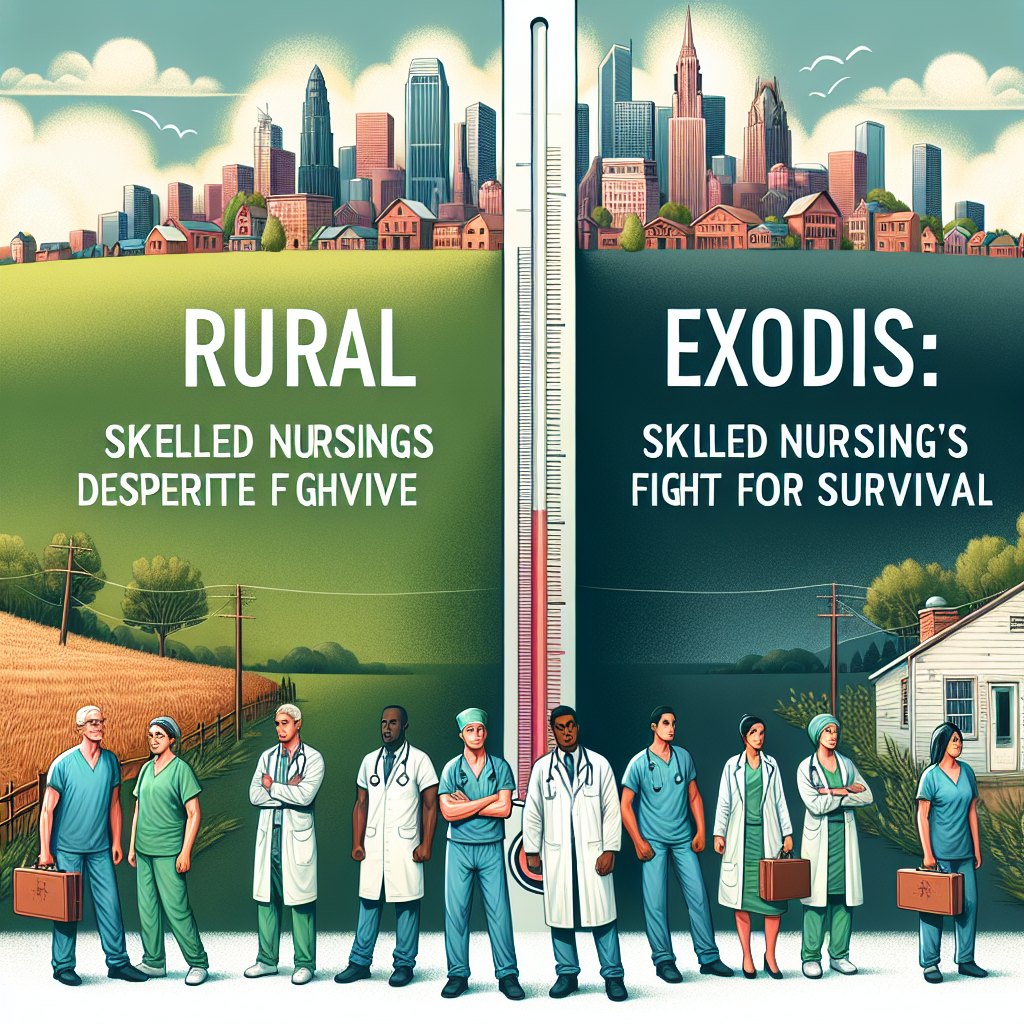New York, NY—The rural exodus, a phenomenon long associated with the flight of younger populations towards urban centers, has begun exerting a critical pressure on a sector essential for its most vulnerable residents: skilled nursing facilities. Across the nation’s pastoral expanses, these centers are waging a desperate fight for survival, battling not only the demographic shifts but also the economic and regulatory headwinds that have intensified in the wake of the pandemic.
One stark statistic underlines the depth of the crisis: according to a 2022 report by the American Health Care Association, over 400 rural skilled nursing facilities have shuttered in the past decade, a trend that threatens to leave the nation’s elderly population without essential care. “The impact of these closures goes beyond statistics, deeply affecting the lives of our elders and the fabric of rural communities,” remarked Mark Parkinson, President and CEO of the AHCA, highlighting the human toll behind the numbers.
The rural exodus has accelerated for multiple reasons. Younger individuals leave in search of broader educational and employment opportunities, diminishing the population that skilled nursing facilities rely on for staffing. Moreover, these demographic changes result in a smaller tax base, leading to reduced funding for public health programs that many rural facilities depend on. Concurrently, Medicare and Medicaid reimbursements, which constitute the primary source of income for many of these facilities, have not kept pace with the rising costs of care, pushing them further towards financial instability.
Staffing emerges as perhaps the most critical of the challenges faced. The outflow of younger, working-age individuals from rural areas has led to severe shortages in skilled and unskilled labor alike, making it increasingly difficult for facilities to maintain operations. “We’re essentially competing for a shrinking pool of talent, which not only drives up costs but also strains our ability to provide the care our residents expect and deserve,” explains Janet Silversmith, director of a rural health association in Minnesota.
Innovative solutions are being sought, with some facilities looking towards advanced technologies such as telemedicine to bridge the gap in care delivery. Others have embarked on partnerships with local educational institutions to create pipelines of healthcare workers trained to meet the specific needs of rural populations. Government intervention, in the form of increased funding and policy support, is also seen as critical.
Yet, for many, the situation remains precarious, with the specter of further closures looming large. As rural skilled nursing facilities struggle for survival, the consequences of failure ripple outwards, affecting not just the elderly and infirm but also the economic and social stability of rural communities nationwide. The coming years promise to be pivotal, with the sector’s ability to innovate and adapt likely determining the future of rural elder care in America.


